
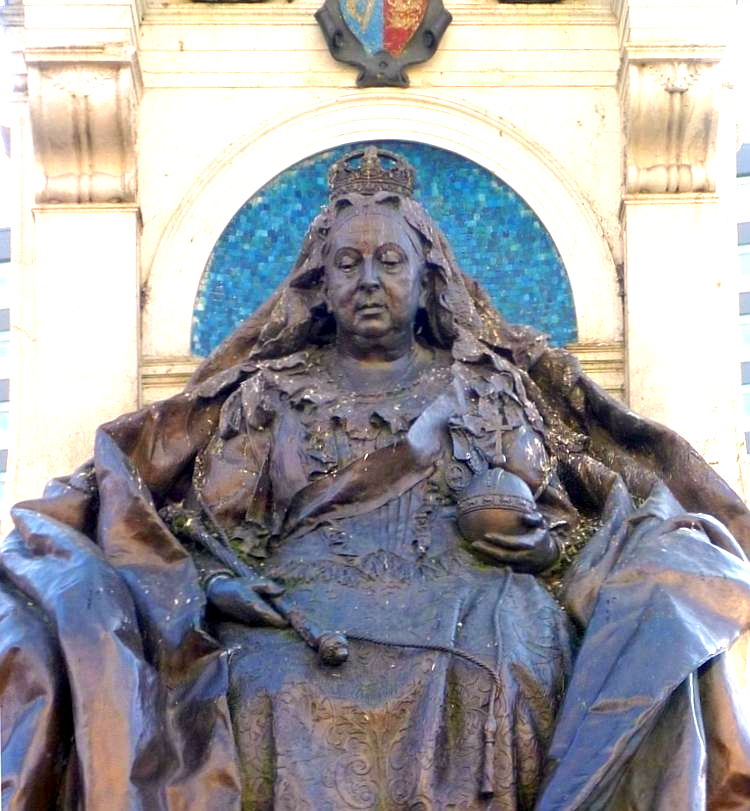
Monument to Queen Victoria,” by Edward Onslow Ford (1852-1901). 1901. Bronze figures, including St George and the Dragon on top of the surround, and the symbolic figure of Maternity to the rear; Mazzano marble for the throne and pedestal; and mosaic tiling set into the surrounds behind the Queen's and Maternity's heads. Piccadilly Gardens, Manchester. Other features include the Royal Arms above the Queen's head, and a line spoken” by Shakespeare's Henry V beneath her: "Let me but bear your love, I'll bear your cares" Henry IV, Part 2, Act V, sc. 2, l. 58).
A statue of the Queen had been planned for roughly this spot even before Sir Joseph Paxton laid it out in 1854 (see Wyke 119), but it was not until after the Diamond Jubilee of 1897 that real progress was made. Even then, when a fund was opened, it was realised that more useful forms of memorial, such as hospitals or schools, were favoured (see Wyke xi). But at length this statue joined the others already gracing the esplanade: Matthew Noble's Wellington Monument (1853), William Theed's bronze copy of James Watt (1857; originally” by Chantrey), Theed's copy of Chantrey's John Dalton (since relocated), and William Calder Marshall's Peel Monument. Thus it became the centrepiece of quite an assemblage of important Victorian statuary.
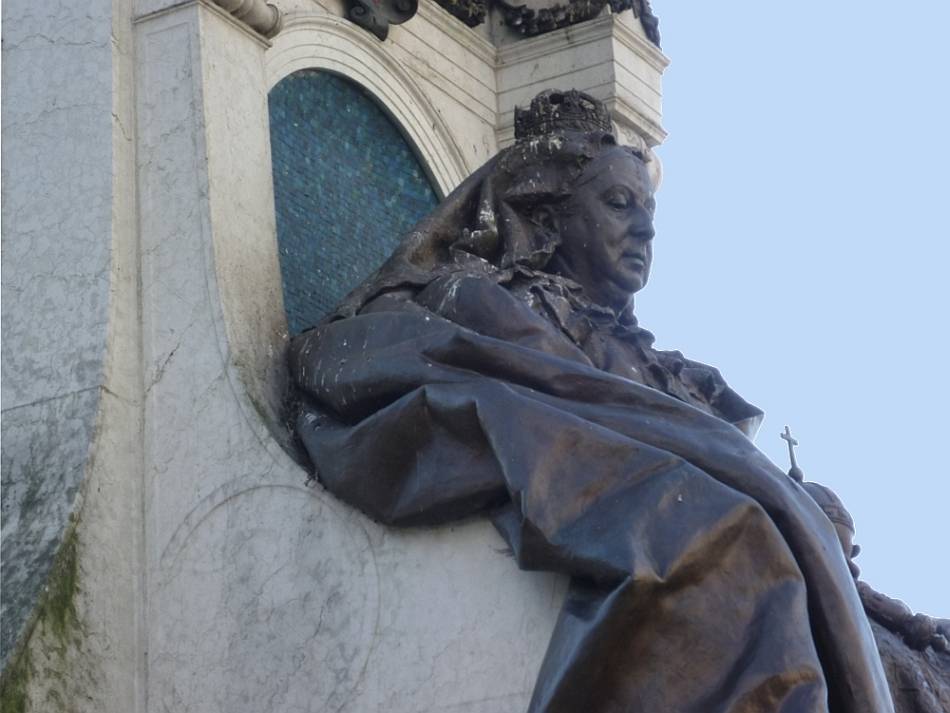
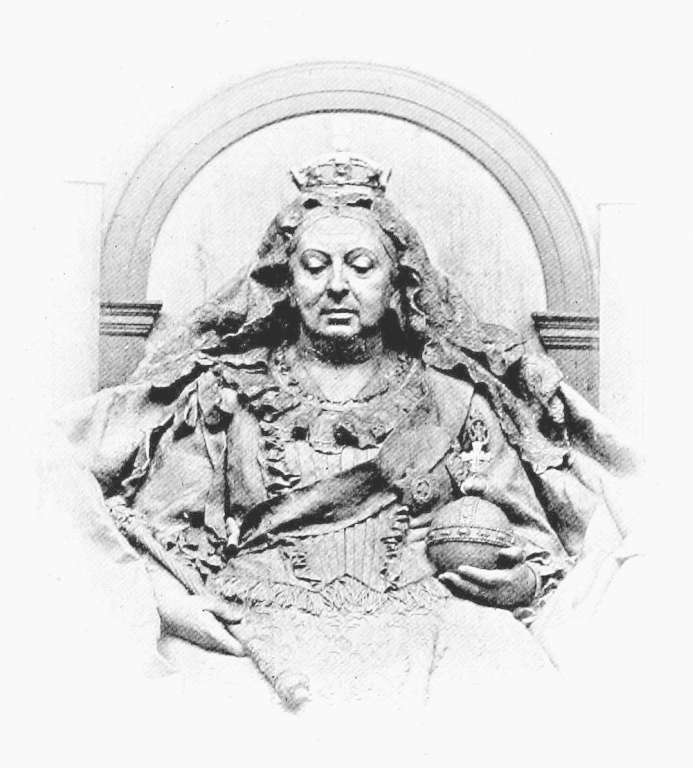
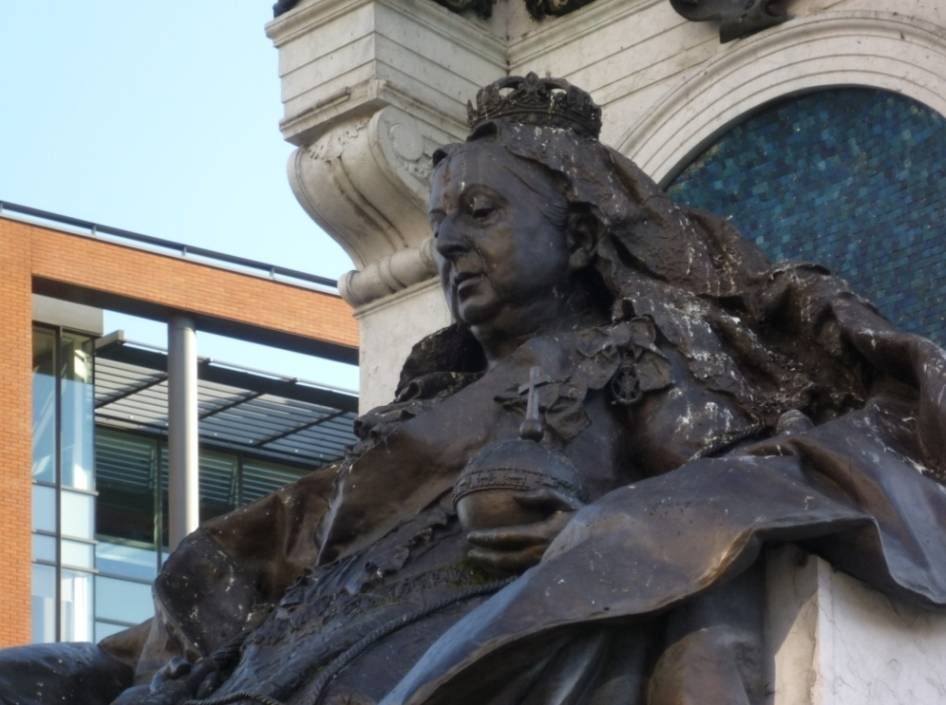
Left to right:: (a) The Queen from the side. (b) Drawing of the Queen's upper half (Spielmann 65). The detail is better appreciated here than in the actual monument, where pigeons like to perch on the surround, except that the bright mosaic, which makes a good contrast, cannot be seen here. (c) Queen Victoria from the other side. Garbed in her ceremonial robes, and with her hooded eyes looking down over her people and dominions, the monarch appears broad and brooding, and there were "[h]owls of criticism" leading up to and after the unveiling (Wyke 4), though according to the Times there was plenty of cheering and enthusiasm as well from the huge crowd — a crowd so huge, in fact, that there were a number of accidents and injuries. Some critics did praise it. Marion Harry Spielmann, for example, found "nobility about both head and figure, which are rendered with truth and yet with that suggestion of powerful personality and an impressive presence so essential in works of this nature." He adds: "It is a striking memorial of a great Queen, and pose and drapery are in harmony with the sentiment" (52). Much more recently, Benedict Read has described Victoria as "massive, resplendent" (363). She is certainly larger than life: the Times gives all the figures: pedestal, 5' high, throne, 19' high, statue itself from base to coronet, 9½' ("Statue").
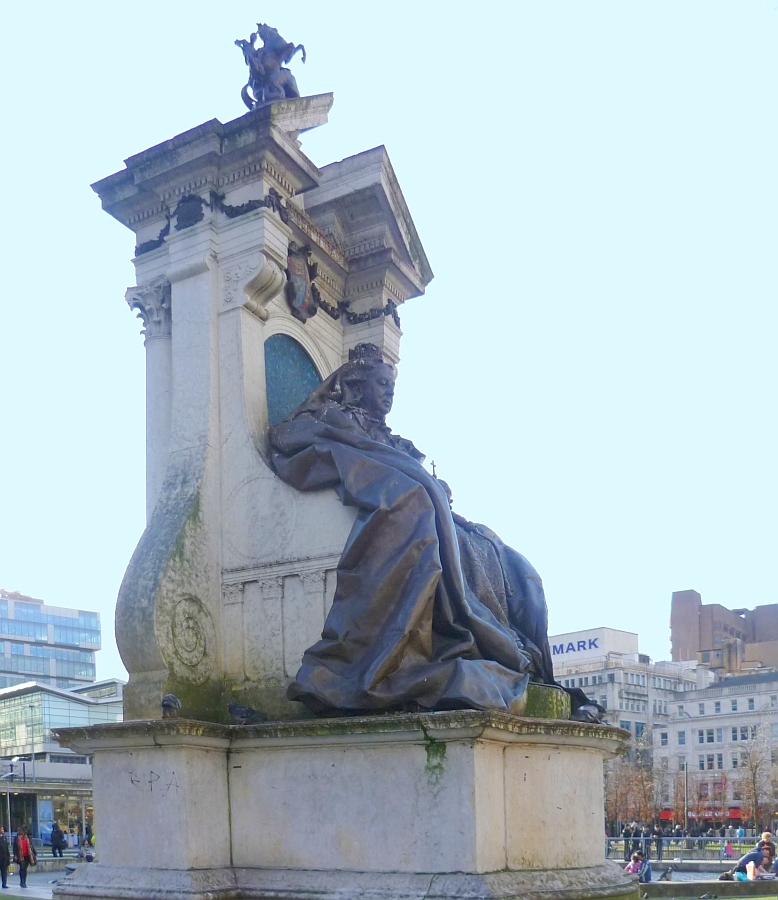
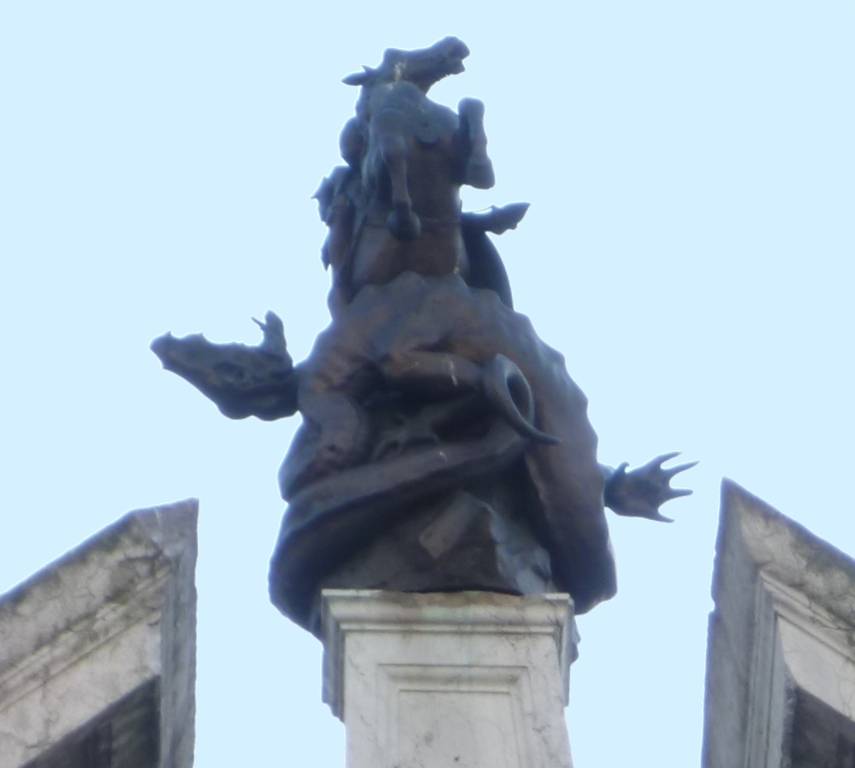
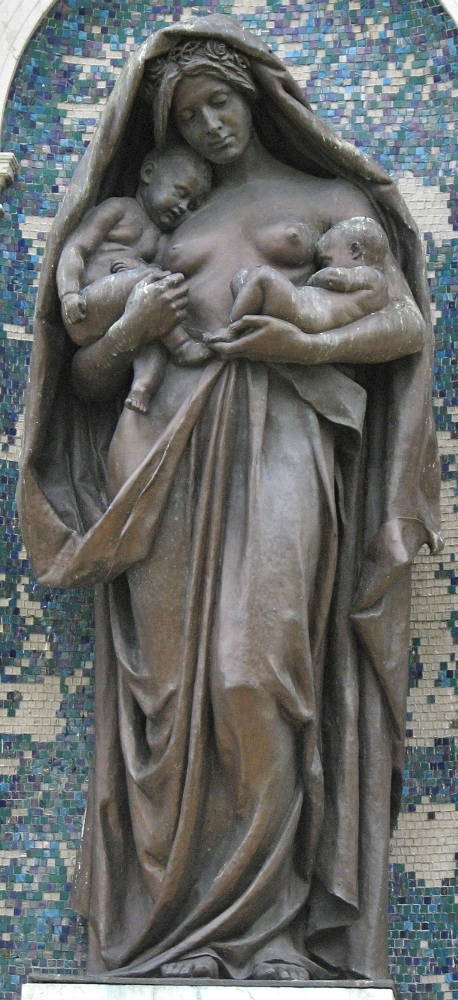
Left to right: (a) The whole monument from the side. The outline of St George on his rearing horse, and the dragon writhing below him, is best seen from the side. (b) St George and the Dragon from the front, a knotty mass of flailing limbs and heads. (c) Maternity, Photograph by Bob Speel, and reproduced here” by his kind permission: "The figure of 'Maternity' at the back of the throne is the symbol of 'the Mother of her People'" (52), quite a common theme in such monuments at this time (see particularly Sir Thomas Brock's Motherhood on the Victoria Memorial in London). This time the figure is better seen in its setting, since it is sheltered from the birds and looks much less sombre. However, it is indeed at the back, and easily missed. Perhaps this is one reason for Speilmann's final comment on the work: "It may be hazarded that others of Mr. Ford's architectural arrangements have been more felicitous" (52) — though, here again, some seem to find its general impact satisfactory, seeing it as a "stately and dignified seated bronze figure against a Baroque architectural background" (Hartwell 189).
Photographs by the author unless otherwise indicated. [You may use these images without prior permission for any scholarly or educational purpose as long as you (1) credit the photographer and (2) link your document to this URL in a web document or cite the Victorian Web in a print one. Click on the images for larger pictures.]
Bibliography
Hartwell, Clare. Manchester. Pevsner Architectural Guides. London: Penguin, 2001. Print.
Read, Benedict. Victorian Sculpture. New Haven & London: Yale University Press, 1982.
Speel, Bob. The Website of Bob Speel. Web 5 April 2012.
Spielmann, Marion Harry. British Sculpture and Sculptors of Today. London: Cassell, 1901. Internet Archive. Web. 5 April 2012.
"Statue of Queen Victoria in Manchester." The Times. 11 October 1901, p. 10. Times Digital Archive. Web. 5 April 2012.
Wyke, Terry, with Harry Cocks. Sculpture of Greater Manchester. Liverpool: Liverpool University Press, 2004.
Last modified 19 May 2012